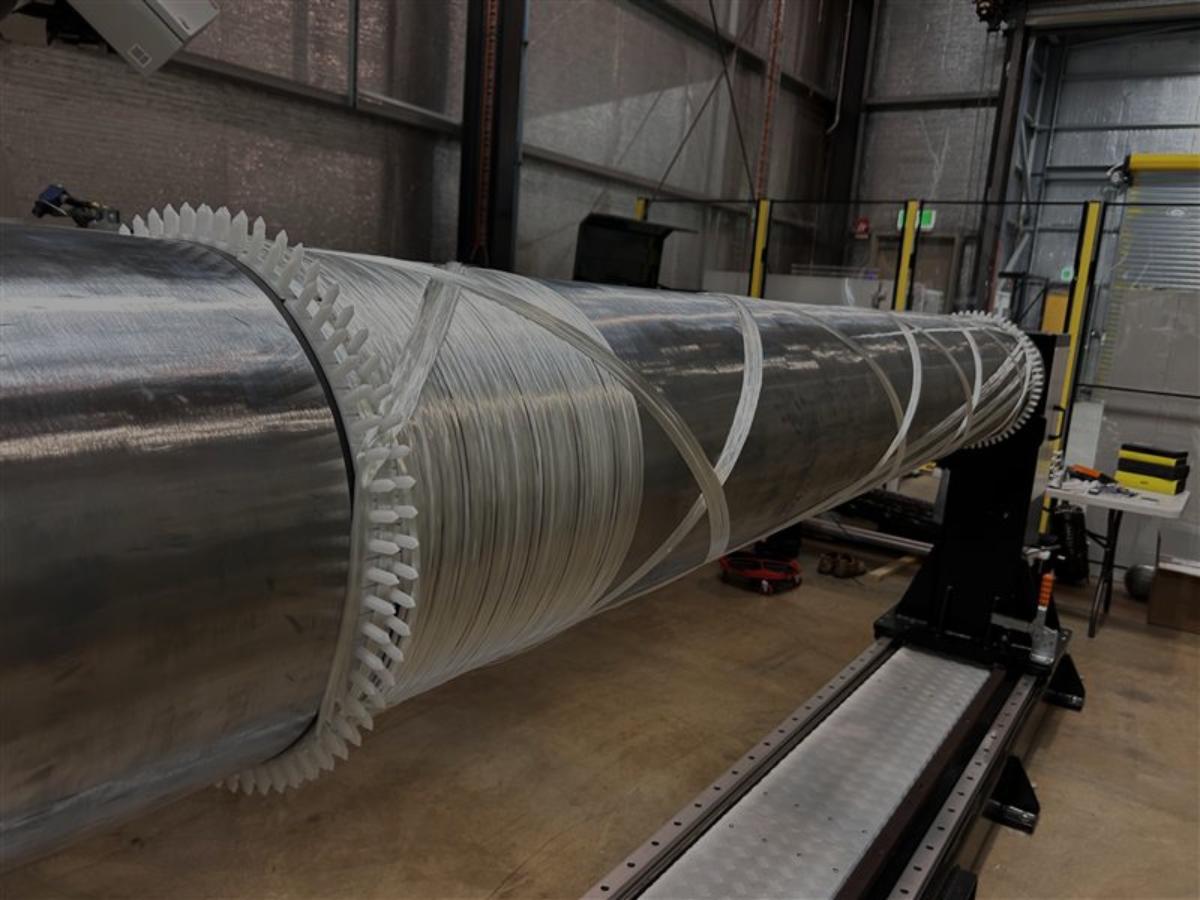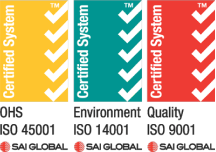Wagners Composite Fibre Technologies (CFT) is in the process of developing filament winding technology to introduce to its production line, enhancing its advanced manufacturing capabilities and enabling the development of new Fibre Reinforced Polymer (FRP) product offerings.
This addition supports greater design flexibility, structural performance, and production efficiency, allowing Wagners CFT to expand its reach into new markets and applications in 2026 while continuing to deliver high-quality, durable FRP solutions.
Lead Research and Development (R&D) Engineer, David Bolin believes filament winding will open new doors for Wagners FRP product supply and allow larger or custom profiles to be manufactured.
“Filament winding is a discrete manufacturing process whereby a fibre impregnated with resin is wound onto a mould or ‘mandrel’ in a customisable pattern,” David Bolin said.
“Following winding, the glass and resin laminate is heat cured before the mandrel is extracted from the inside of the part. The resulting part is a strong, durable composite matrix ready for post processing,” Mr Bolin said.
“One of filament windings strengths is being able to apply fibre onto the mandrel at a broad range of angles and locations giving the parts optimised properties for their service conditions,” he said.
“The filament winding process will manufacture the same familiar FRP material as our existing pultrusion process all with the same great benefits of being durable, inert, lightweight and high strength.”
“In addition, it offers a higher degree of flexibility for manufacturing parts with larger diameters than pultrusion meaning it is perfect for customers looking for FRP transmission poles, marine piles or pressure vessels.”
“It also offers the capability of manufacturing FRP parts that are not a constant cross section throughout, a simple example being adding a taper to a FRP pole, through to creating custom aerospace components.”
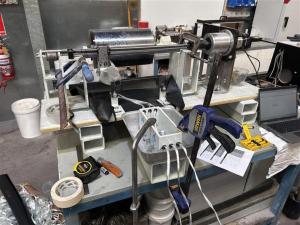 Pictured – R&D test setup for filament winding.
Pictured – R&D test setup for filament winding.
Introducing filament winding to the production line has created new jobs and will provide opportunities for current employees to expand their skills and undertake new training.
“Filament winding will be an exciting new manufacturing capability for Wagners CFT and has necessitated the onboarding of new management and engineering talent to oversee the development, installation and operation of the cell,” David Bolin said.
“A comprehensive training program will be implemented to ensure operational staff are fully versed in the cell’s capabilities, manufacturing functions and ongoing maintenance,” Mr Bolin said.
“Aside from internal support staff, the cell is being fully designed and manufactured by a third-party engineering company,” he said.
“They have supplied filament winding equipment across Australia for a wide variety of industries including into the pioneering space and rocketry sectors.”
“Given the broad experience base involved in this project both external and internal, we are very confident of a positive outcome and a versatile, consistent and robust new manufacturing process available at Wagners CFT.”
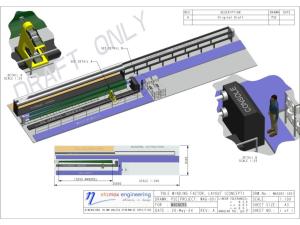 Pictured – Computer model photos of the filament winding cell layout.
Pictured – Computer model photos of the filament winding cell layout.
Once completed, the filament winding cell will be integrated into the Wagners CFT manufacturing facility in Wellcamp, Queensland.
“The filament winding cell will be a specialist piece of machinery with several integrated stages,” David Bolin said.
“First will be the wet winding stage, which supports and turns the mandrel whilst moving the fibre application carriage to carry out the required winding pattern,” Mr Bolin said.
“The mandrel and finished laminate will then be moved to the curing stage, which will utilise a unique combination of infrared and steam heating to evenly cure the laminate,” he said.
“The last stage will be extraction, whereby a high force will be applied to the mandrel to remove it from inside the part.”
“The filament winding cell will be installed into an existing shed at the Wagners CFT site out at Wellcamp.”
“In the same shed, a new resin mixing plant and paint booth will be installed to support full rate production.”
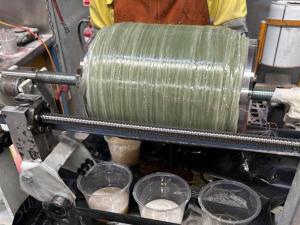 Pictured – Wet winding occurring on the R&D test setup.
Pictured – Wet winding occurring on the R&D test setup.
While pultrusion has long been a cornerstone of Wagners FRP manufacturing, the addition of filament winding will introduce a new level of flexibility and customisation.
“Filament winding and pultrusion both manufacture the same strong, durable composite matrix that will be familiar to our existing client set,” David Bolin said.
“They can both utilise the same resin types and fibre types and will reach similar end properties,” Mr Bolin said.
“However, filament winding has greater flexibility to manufacture bespoke composite parts where their size, geometry or volume would make it challenging or even impossible to manufacture via pultrusion,” he said.
“Pultrusion is a strong and capable workhorse, able to output high volumes of product, whilst filament winding will support more custom client requests and open new product opportunities previously not possible with pultrusion.”
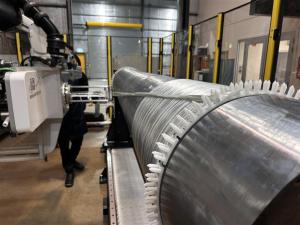 Pictured – The commencement of the University of Southern Queensland filament winding trials.
Pictured – The commencement of the University of Southern Queensland filament winding trials.
The new filament winding cell is set to deliver immediate value for key sectors, with the capability to produce larger FRP profiles drawing strong interest from both the electrical and marine industries.
“There will be immediate benefits for our electrical utility clients looking to increase the range of pole sizes available in FRP material,” David Bolin said.
“The scope of the cell includes being able to manufacture transmission size poles up to 23m long,” Mr Bolin said.
“These sizes of poles should also readily translate across to the marine pile sector, where demand for large diameter FRP piles is ever increasing for installation into continuous exposure saltwater environments,” he said.
“The project has already garnered significant interest from existing customers in the electrical utility space and marine pile space.”
“One client was very active in pushing for the capability to supply larger FRP poles thus being instrumental in initiating the project back in 2024.”
“They have subsequently also been active in supporting and scoping the capabilities of the cell to suit their needs.”
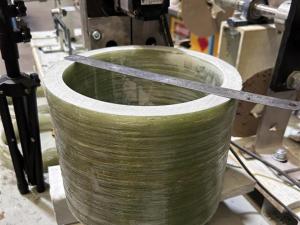 Pictured – A composite piece from the R&D test setup.
Pictured – A composite piece from the R&D test setup.
Technical challenges have been identified during the development of the filament winding technology.
“Filament winding is a common process in the composites industry, already being used worldwide to manufacture composite products with one example being pressure vessels as the winding process excels at applying high volumes of hoop orientated fibre,” David Bolin said.
“The first challenge was that this contrasts with the long/thin part geometry and axial stiffness requirements of the pole/pile target markets, necessitating significant developmental work on mandrel design and fibre application methods,” Mr Bolin said.
“A second challenge was how to consistently and uniformly heat cure the laminate for best end use properties whilst maximising production speed, with a combination of infrared and steam currently being developed which will supply controlled heat to both sides of the laminate,” he said.
“The talented, multidisciplinary filament winding team at Wagners CFT are continuing to develop tailored solutions through testing and innovation to overcome these challenges.”
 Pictured – The University of Southern Queensland filament winding trials.
Pictured – The University of Southern Queensland filament winding trials.
A new research partnership will support the rollout of filament winding at Wagners CFT and products should be available early next year.
“A new collaborative research partnership has been signed with the University of Southern Queensland that will be undertaken in conjunction with the installation and operation of the filament winding cell at Wagners CFT,” David Bolin said.
“Outcomes from this partnership will include a deeper understanding of the material properties and a focus on its suitability for a particular end use product; aids to navigation in marine environments such as light beacons and warning markers for boating safety,” Mr Bolin said.
“Wagners CFT is committed to delivering filament wound products to the highest standard, ensuring each item exceeds quality, durability, and performance standards,” he said.
“The integration of filament winding will enable Wagners CFT to expand product offerings and meet more customers’ needs. This dedication reinforces Wagners CFT’s reputation as a trusted supplier in the FRP industry.”
“Filament winding production is planned to commence Christmas 2025 with filament wound products to be available in early 2026.”
If you’ve got a project that you think could be suitable to larger filament wound profiles, contact us for a Project Deep Dive and tell us about your project needs https://www.wagnerscft.com.au/contact-deep-dive/
If you have an enquiry about filament winding, complete the Contact Us from https://www.wagnerscft.com.au/contact-us/
